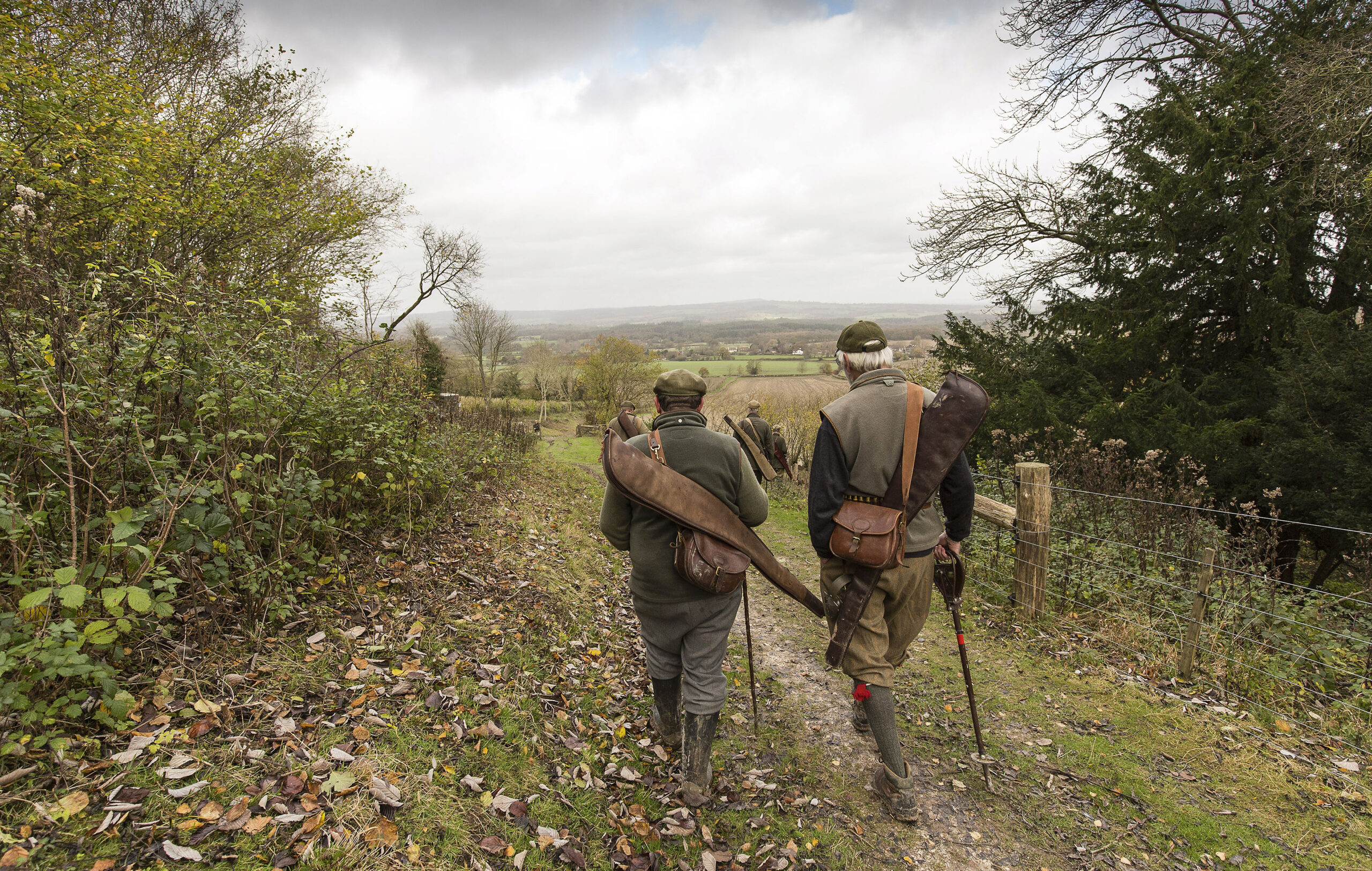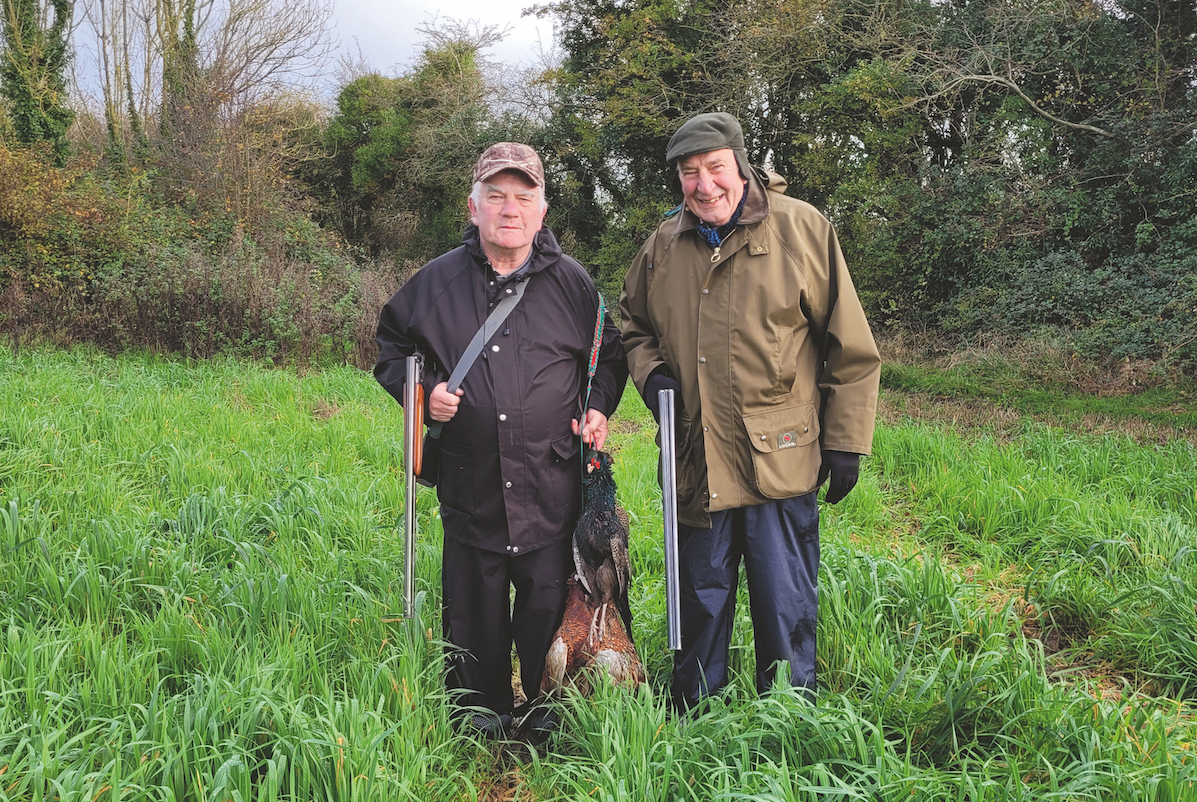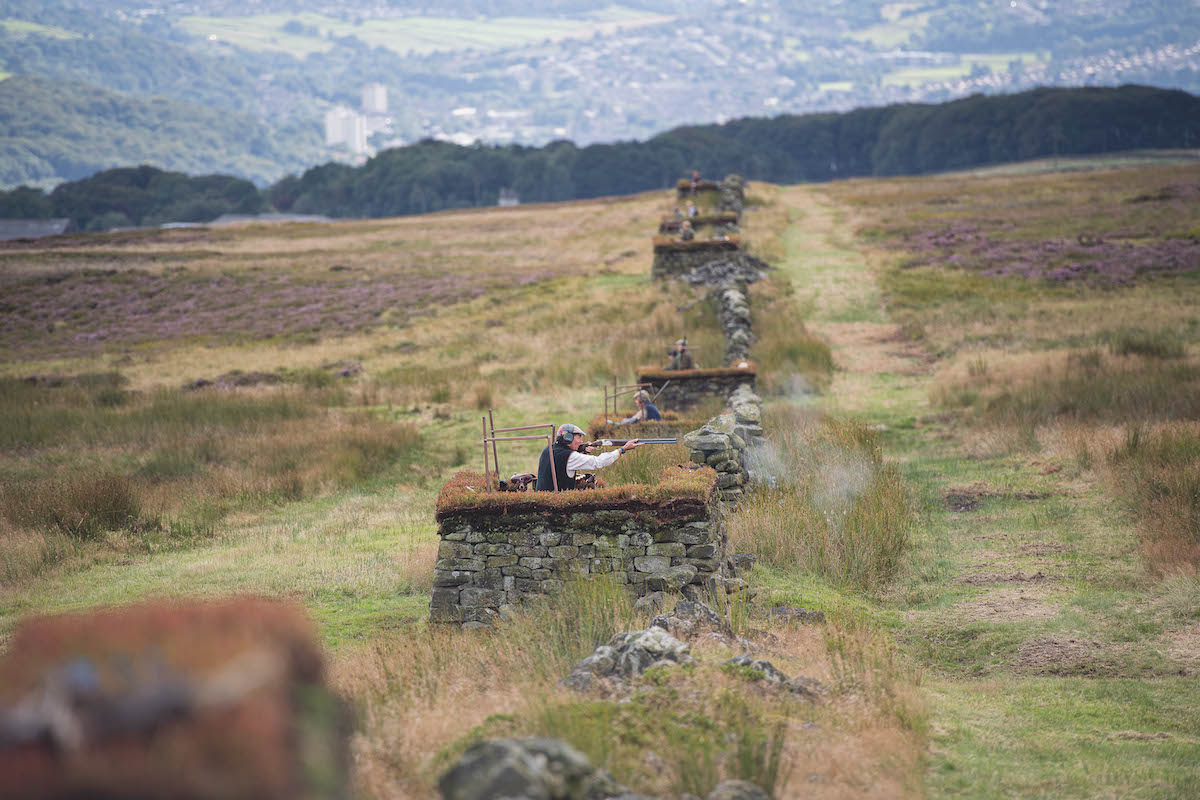Cocking Shoot, West Sussex
Cocking shoot, part of the Cowdray Estate, is a pheasant shoot that shows testing birds that will delight even the pickiest shooter. By Chris Warren.

Technology is a wonderful thing. I have an app on my iPhone that marries OS maps with GPS, so I can say with absolute certainty that the guns shooting Triangle at Cocking Shoot in West Sussex stand in a ride cut in the woods at a height of 150m above sea level. I can also say that the hill above tops out at 238m above sea level. Let me tell you, that makes for some rather high and testing birds – the South Downs may not have the ruggedness of Exmoor but the shooting is pretty darned good.
The South Downs National Park, officially designated in April 2011, covers more than 600 square miles and runs from Eastbourne in the east to Winchester in the west, and with its scarp slopes and wooded combes encompasses some wonderful shooting country. Cocking shoot, just south of Midhurst, is bang in the middle and the ground is quite spectacular. The shoot has been rented by Charles Pearson for some 27 years and I was fortunate enough to spend a day in mid-November with him and a team made up of six of his friends plus his son, George. Charles, who was just back after a trip hunting chamoix, gave me the facts and figures as we travelled in the trailer to the first drive.
“We have 3,500 acres at Cocking shoot, the southern part of the Cowdray Estate, and 18 drives. We host shoots twice a week and it works out that around half are let days and the rest private. The headkeeper, Robert Smallman, has developed Cocking shoot into one of the most highly regarded pheasant shoots anywhere in the south of England, and his passion for ensuring every day is as sporting and successful as possible is reflected in the results.”
Career opportunities at Cocking shoot
Two things stood out to me at Cocking shoot: the quality of the birds and the sheer efficiency of the keeper, his beating team and the pickers-up. On all four drives it seemed to me that the trailer stopped, the guns disembarked and made their way to their pegs, readied themselves and immediately the birds started flying over, put up in a steady, controlled way. Absolutely perfect.
This, of course, doesn’t happen by chance. This is Rob Smallman’s 27th season in charge at Cocking shoot and he runs a tight ship. He left school at 15 and began his keepering career straight away. His father thought it was not much of a profession but 44 years on I think we can say he was probably incorrect. Rob spent eight years as an underkeeper before becoming Sir John Fuller’s lone keeper at Neston Park. After nine years there he felt it was time to move on and answered an advertisement in the shooting press that read: ‘An extraordinary opportunity for an extraordinary man’. He got the job.
“When I arrived at Cocking shoot there were only two release pens and most of the drives were on the lower ground,” Robert explained. “Now we have eight pens and I think you could say we specialise in high, well presented pheasants.”

Cocking shoot headkeeper Robert Smallman.
With the help of Robin Ward-Sale, his full-time underkeeper, Robert marshals his team of 40-plus beaters and pickers-up with impressive precision, though the fact some of the beaters have been coming here to Cocking shoot for his entire tenure shows he must be a good boss. In fact, it must be a cracking shoot because this is hardcore beating and certainly not just a stroll through the woods; you can’t keep beaters coming back week after week unless the shoot is something special. Two of the beaters have been attacking the slopes of the South Downs for over 50 years and it must be good for you because Bob Waklin, an ex-butcher from Godalming, still comes for the mornings at the age of 91.
A thorough workout at Cocking shoot
I have been to shoots where the first drive is something of a litmus test, the keeper trying to gauge the quality of the team, but not on this day at Cocking shoot. In choosing the Bumps as the first drive Rob and Charles had clearly decided the guns were up for a bit of a challenge. The view northwards towards Midhurst was beautiful in the November sunshine, but the team only had eyes for the pheasants that appeared high above the trees, curling and sliding over the line, offering plenty of challenge for all.

Clive Fowler, who marshals the guns on the trailer.
Such is the steepness of the escarpment that each gun had his own levelled area cut into the side of the chalk. There was no let up and halfway through this exciting drive Mark Firth called to Charles, who was standing next to him in the line, exclaiming: “If I’d known it was going to be like this I’d have visited the gym!”
Charles’ son George shot well, folding birds neatly with his Lingard side-by-side, and then showed obvious enjoyment in sending his little cocker, Tricky, to pick-up after the drive. “We got him when he was a year old and partially trained but he has really gone on and developed well,” he said. As you might expect from his lineage, it is shooting in the winter for George and polo in the summer, being already, at 20, a very keen two-goal player.

George Pearson with the fruits of another busy drive at Cocking shoot.
Paul Roberts, long-time friend of Charles, was one of the two back guns on this drive and he told me: “The Bumps is my all-time favourite drive because whatever number you have drawn, the pheasants vary from very high and fast to curling in all directions, but all are shootable if you are on the ball.” He was also full of praise for the keeper, adding: “Robert Smallman handles his pheasants like a conductor of a symphony orchestra and always gives a great day’s sport, whatever the weather.”

Peter Pleydell-Bouverie takes on a good bird on The Warren.
The shot of the second drive, the Warren, was by Piers Fox-Andrews. There was a hiatus in the steady flow of birds and then a single cock bird flying at least 50 per cent higher than the rest set its wings towards Piers. There were no other birds in the air and everyone turned to watch as he calmly lifted his 20 bore and dispatched it with one cartridge to the accompaniment of a small and appreciative cheer.
After the comparative throttling back of the Warren, the aforementioned Triangle was a return to the neck-aching screamers we saw on the Bumps. The Triangle is one of a pair of drives (the other being the Thorns) found in the deep fold known as the Rifle Range – you can still see the evidence of its past military use, which apparently goes back before the First World War.
A break before an appointment at a quarry
Lunch was taken at the Park House Hotel, and very good it was too. They have not one boot scrubber but two – a sure mark of a hostelry that knows its shooting parties. The food is good, the service impeccable and they realise that one can’t take all day about it. Much refreshed, we boarded the trailer for the last drive of the day, the Chalk Pit.

All members of the picking-up team at Cocking shoot were equal to the challenge posed by the terrain.
Imagine Doctor Who and the Cyber Men – that’s the Chalk Pit. The guns stand on three levels and the birds are flushed over the cliff above them, add the tail of Storm Barney and what you have is tall, curling pheasants doing 0-60mph like a Ferrari. The pace was fast and very furious. Cartridge makers like drives like the Chalk Pit because their turnover rises – substantially.
The weather had turned ugly and we were all somewhat dampish by the end of the drive but there was not one of us who wasn’t smiling. Gosh they were good pheasants. The only complaint was the tongue-in-cheek one from Charles Paravicini, who said: “My barrels got so hot I had to stop shooting to let them cool down. And even then my hand got a burn – through the glove!”

Charles Pearson on the lunar-like landscape of Chalk Pit.
At the day’s end I made my farewells to the guns and accepted Rob’s invitation for a cup of tea back at the farm where the beaters meet. This gave me the chance to talk properly to this very experienced keeper. It turns out he is not too fussy about the breeding of his pheasants as long as he gets fit and healthy birds.
“With the topography available, most would fly well, the trick is keeping them in the holding cover in the bottom,” he said. “You have to spoil them to keep them on the north-facing scarps. To be honest the milder, damper winters we’ve been experiencing are perfect for the Downs.”
From the banter among the dozen or so beaters and pickers-up that had stopped for a cuppa and a piece of homemade cake, I could tell that the tight ship was also a happy one.

George Pearson’s dog, Tricky, retrieves a hen bird.
Of his 27 years as headkeeper at Cocking shoot he told me: “I’ve been well supported by my employer, the estate and an army of beaters, loaders, pickers-up and many others behind the scenes. Cold, north-facing downland is hard going – you never know day to day how the weather might dictate the outcome. After 44 years you would think that the desire to succeed would lessen but that hasn’t happened yet. Robin and I see every day as a challenge and a special day to those who come to Cocking shoot.”
As I mentioned earlier in this feature, shoots like this don’t happen merely by chance. In this particular case you need a shoot owner who backs his keepers, a headkeeper who is vastly experienced, a hard-working underkeeper and a team of men and women prepared to go out in all weathers and who understand what is needed. Plus, of course, those wooded scarp slopes. Simple really.
Shoot days at the Cocking Shoot offer bags of between 300 and 500 birds. For more information, contact Theresa Pitts on 01798 861655 or email: [email protected]
Cocking shoot – the area guide
Travel
The village of Cocking lies less than three miles south of the market town of Midhurst, in the heart of the South Downs National Park. The A286 links the two settlements, with the nearby A272 joining up with the A3 that takes motorists to the southwesterly tip of the M25. Gatwick Airport is less than one hour away, while the nearest railway station is Liss, around 12 miles to the north-west.
Stay
Guns dined at the Park House Hotel (parkhousehotel.com), an establishment Shooting Gazette visited a few years ago, and it’s clearly lost none of its know-how when catering for shooting parties. An overnight stay is a must. Meanwhile the Spread Eagle (hshotels.co.uk/spread-eagle-hotel-and-spa), a 39-room former coaching inn right in the heart of Midhurst, is worth a try. Consider heading south down the A286 for the luxurious surroundings of the Goodwood Hotel, too (goodwood.com).
Catering
The 250-year-old Halfway Bridge (halfwaybridge.co.uk) between Midhurst and Petworth on the A272 is a 17th century coaching inn where local ingredients and a contemporary setting have helped it to win numerous awards in the recent past. Also worth a mention is the Royal Oak in East Lavant (royaloakeastlavant.co.uk), south of Midhurst, which owners Sarah and Charles Ullmann describe as being “run by people dedicated to good food, warm hospitality, and personal service”. Both of these establishments offer accommodation.








